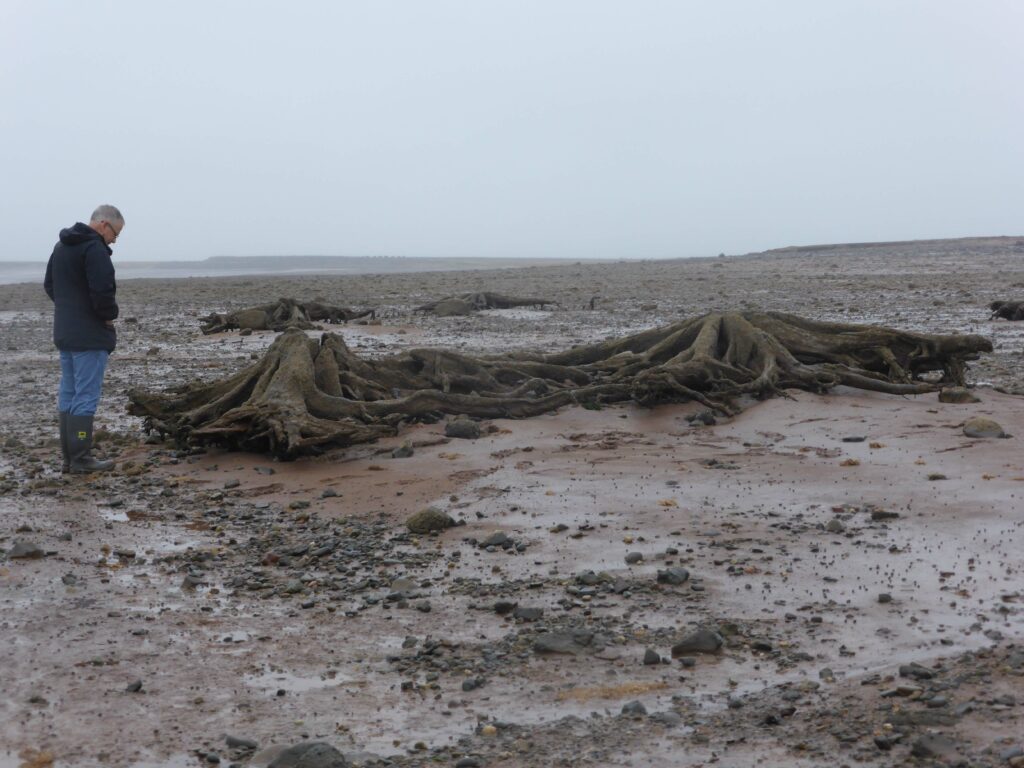When I studied archaeology, it was a very different topic. We learnt about cultural change through the examination of specific artefact and monument types, often assuming that the pieces that we found were finished and perfect.

There was little attention to process or technology. Indeed, the general ethos was that there was a ‘right answer’ to everything; the more you could memorize, the more you would know. It is salutary to think that radiocarbon dating was still considered a new advance.
Decades of work have taught me to change in so many ways. None more so than in my realisation that if I am to understand the world of the past then I need to embrace the presence of the submerged landscape. Underwater archaeology certainly existed when I was a student, but it was a specialised field best left to devotees of shipwrecks or lake dwellings (crannogs in Scotland). Never in a million years did I think that I would need to swap the torn and muddy trousers and t-shirts of the field excavator for an immersion suit.
It is still a specialized field and I am essentially still a land-based archaeologist. I’m never going to be able to undertake the work necessary to elucidate just what a landscape looked like at a time when relative sea-level was 10m lower. But now I realize that the vagaries of past sea-level change mean that I have to be able to obtain that information if I am going to understand properly the world within which the people of the past operated. And therein lies another change: whereas we used to be able to conduct our research in stately isolation, now we work in a group. Each member brings a different skill to the table and the end result is usually proof of the way in which two plus two can make considerably more than four. It is more fun as well.
Indeed, it seems today as if the post of ‘archaeologist’ has undergone one of those deconstructions so beloved of trendy chefs. Few, if any, of us can embrace all of the diverging fields of information necessary to produce a rounded archaeological interpretation. Few try. But what we do need to do is to acquire enough basic knowledge of those techniques that impact on our own work in order to understand the strands of information that they impart and how they weave together. In this way, we all have some understanding of radiocarbon dating and have expanded that in recent years to come to terms with the application of Bayesian statistics. We may understand the essential processes of accumulation and change within fluvial gravels, the way in which isotope analysis works, and the principals of lithic analysis. We pick and choose relevant topics from the range available. Archaeology has become a pick-and-mix profession.
So, the archaeology of the submerged landscape touches us all, whether or not we can dive. We cannot ignore it, or leave it for the specialists. We can no longer assume that a site that lies on the coast today was coastal in the past. Perhaps relative sea-level has since risen, perhaps a coastal barrier has breached. There is no value in examining modern beaches, if the contemporary coast lay twenty metres lower than it does today. And we cannot assess available resources unless we know the lie of the land.
We need to familiarize ourselves with the literature, and there are plenty of publications on the subject. Most, however, are technical writings that assume some basic familiarity with the techniques and terminology. That is why I set out to write a primer, an accessible account of a fascinating topic that could act as an introduction for those who wish to take their studies further, while equally enthusing those who simply wished to know more. I know it sounds specialised, and it is part of a series that may sound daunting. But, hopefully, it is not. There is detail of the processes involved in past sea-level change, of the techniques we use to study it, and, finally, a round-up of projects around the world. It is not comprehensive, but it gives a good idea of the extent of submerged sites and landscapes and of the fascinating projects that are now taking place in every corner of the globe. Hopefully, it will inspire you to find out more.
Landscape Beneath the Waves is available from local booksellers, from Amazon, or direct from the publishers. And perhaps you could support your local library and access it there!
You must be logged in to post a comment.